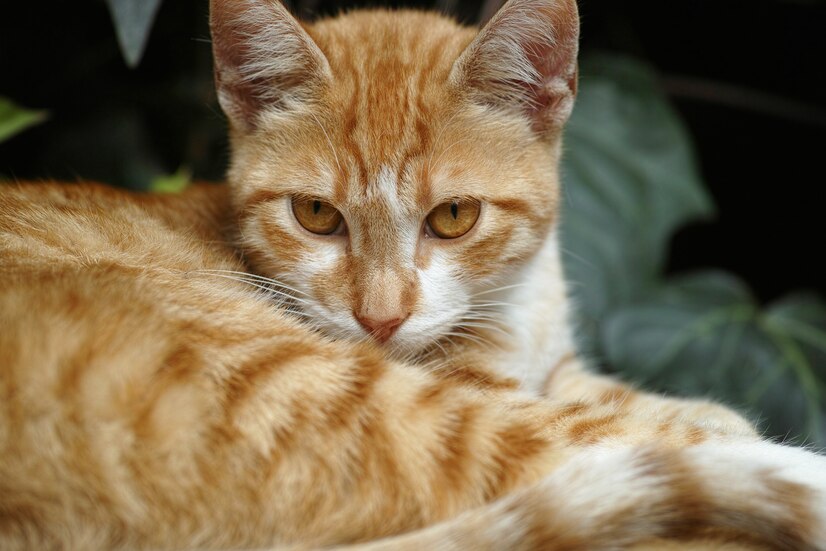Orange cats are special creatures that catch everyone’s eye with their bright, warm-colored fur. These fuzzy friends are more than just a pretty face – they’ve got personalities that can light up an entire home. Whether you’re a new cat owner or someone who’s been around cats for years, there’s something magical about these ginger-colored companions that makes them stand out from the crowd. Now let’s discuss about orange cat behavior.
What is Orange Cat Behavior?
Orange cat behavior refers to the unique set of characteristics, personality traits, and typical actions displayed by cats with orange-colored fur. These cats are known for their distinctive social nature, playful personalities, and remarkable ability to interact with humans. Generally, orange cats are recognized for being extremely friendly, attention-seeking, and more vocal compared to cats of other colors. Read Why Is My Cat Laying in the Litter Box?
Key characteristics of orange cat behavior include:
- High sociability
- Frequent vocalization
- Desire for human interaction
- Playful and energetic temperament
- Strong attachment to their family members
Orange Cat Behavior in Humans
When we talk about “orange cat behavior in humans,” we’re exploring how the presence of an orange cat influences human behavior and emotional responses. Humans often react differently to orange cats due to their unique personality traits:
Read How to Punish a cat for Pooping Outside the Litter Box
Emotional Connection
People tend to form stronger emotional bonds with orange cats because of their:
- Approachable and friendly nature
- Constant seeking of attention
- Ability to display affectionate behaviors
- Expressive communication style
Psychological Impact
Orange cats can significantly impact human behavior by:
- Reducing stress levels
- Encouraging more playful interactions
- Promoting a sense of companionship
- Triggering nurturing instincts
Interaction Patterns
Humans typically modify their behavior around orange cats by:
- Talking more to the cat
- Providing more physical attention
- Being more responsive to the cat’s vocalizations
- Spending increased time playing and engaging
Behavioral Mirroring
Interestingly, humans often start to mirror orange cat behaviors:
- Becoming more vocal
- Showing increased playfulness
- Developing more expressive communication
- Seeking more direct interactions with their pet
The Genetics Behind Orange Cats
The story of orange cats starts with something pretty cool – their genes. Most people don’t know that about 80% of orange cats are male. It’s like a special genetic trick that happens because the orange fur color is linked to the X chromosome. This means that if you see an orange cat, chances are pretty high it’s going to be a boy. It’s nature’s own little magic trick that makes these cats unique. Read How To Clean a Litter Box Step by Step
Are Orange Cats Really Different?
Orange cats have a reputation for being super friendly and outgoing. Walk into a room with an orange cat, and you’ll probably find them wanting to be right in the middle of everything. They’re not the type to hide in a corner or play hard to get. Instead, these cats are all about attention, cuddles, and being part of the family. Many cat owners will tell you that orange cats are like the golden retrievers of the cat world – always happy, always loving, and always ready to make friends.
Daily Behavior Patterns
When it comes to daily life, orange cats are masters of relaxation mixed with sudden bursts of energy. They can sleep for hours – up to 16 hours a day! But don’t think they’re lazy. These cats can go from total couch potatoes to wild play machines in seconds. One moment they’re curled up in a sunny spot, and the next, they’re chasing a toy like it’s the most exciting thing in the world. Their play style is full of pouncing, jumping, and making their owners laugh with their silly antics.
Social Behavior
Orange cats are social butterflies. They love being around people and aren’t shy about showing it. If you have an orange cat, get used to having a shadow – they’ll follow you from room to room, always wanting to be close.
They’re not just content to sit nearby; they want to be right in the middle of whatever you’re doing. Cooking dinner? They’ll be watching. Working on your computer? They’ll probably try to sit on your keyboard. These cats are all about connection and making sure they’re part of the family action.
Common Behaviors Explained
Every orange cat has its own special way of communicating. They’re not quiet cats – they’ll meow to tell you exactly what they want. Hungry? You’ll hear about it. Want attention? They’ve got a meow for that too.
One of the cutest behaviors is kneading – when they push their paws in and out on a soft surface. This is basically a cat’s way of saying “I feel safe and happy here.” Their tail movements are like a secret language too. A straight-up tail with a little curve means they’re happy, while a puffed-up tail shows they’re scared or upset.
Feeding and Eating Behaviors
Food is a big deal for orange cats. They’re usually very food-motivated, which means they’ll do just about anything for a tasty treat. This can be cute, but it also means owners need to be careful. These cats can easily become overweight if you’re not watching their diet. They’ll give you those big, pleading eyes that make it hard to say no to extra treats. The key is to provide balanced meals, control portions, and make sure they get plenty of play to keep them active.
Training and Discipline
People often think cats can’t be trained, but that’s not true – especially with orange cats. They’re smart and love to please their owners. The trick is to use positive reinforcement. Give them treats, use a happy voice, and be patient. Short training sessions work best. These cats are smart and can learn tricks, but they want to do things on their own terms. Consistency is key – if you’re trying to teach them something, stick to the same approach every time. Read Can Cats Talk? Can Cats Really Talk to Us?
Conclusion
Orange cats are more than just pets – they’re family members with big personalities. Each one is unique, full of love, and ready to bring joy to your life. They might be furry, they might be a bit demanding, but they’re absolutely amazing companions who will love you unconditionally. Whether they’re curled up in your lap, chasing a toy, or just sitting nearby, orange cats have a way of making life brighter and more fun.
Remember, while these guidelines give a good overview, every cat is an individual. Your orange cat will have its own special personality that makes it one of a kind.
Read Further
Do Cats See in the Dark? How Much Better Than Humans



